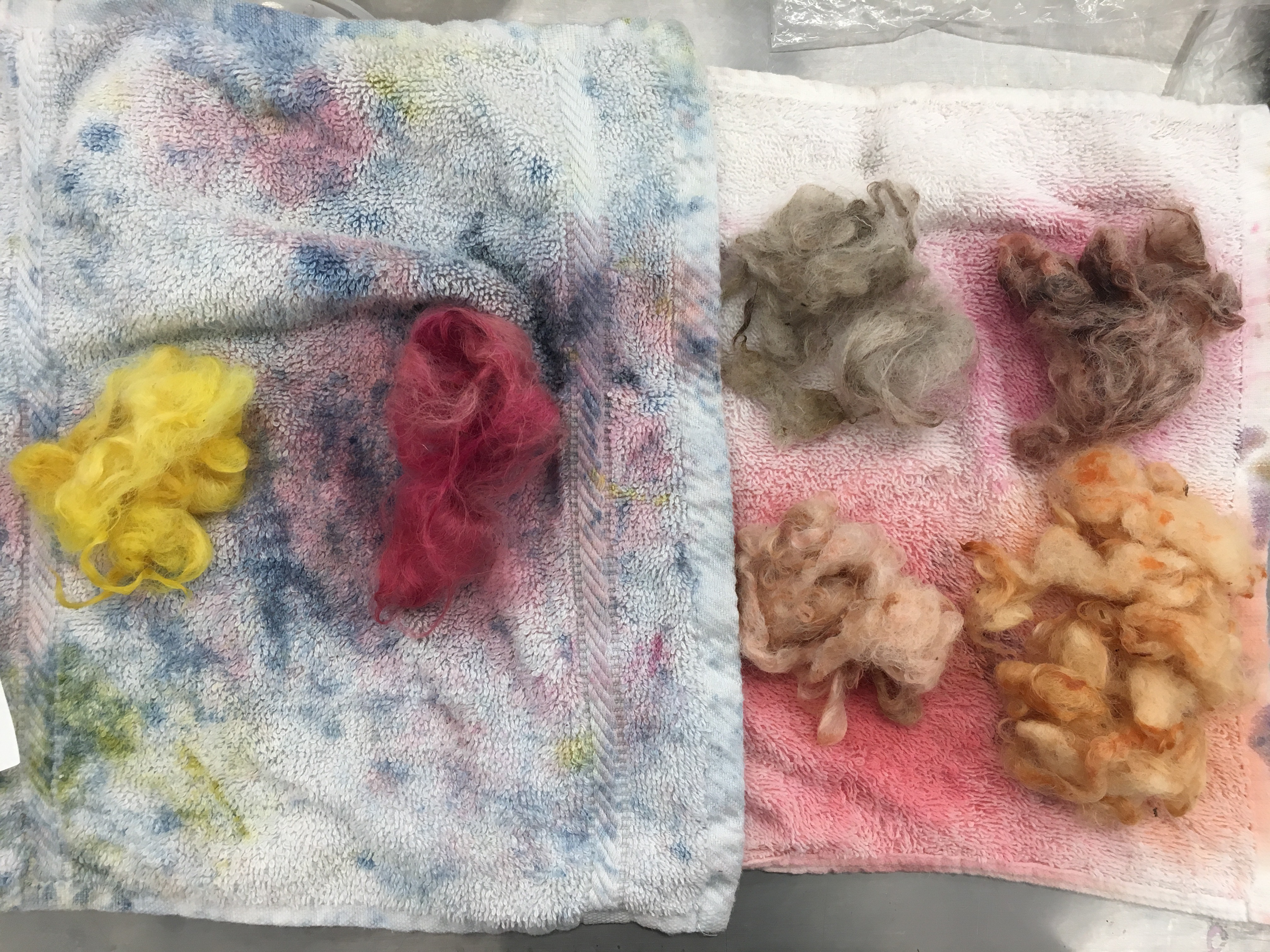
From left to right: The radish dye bath using the shibori technique, (back row) the cochineal dye bath, the turmeric dye bath, (front row) the raspberry and iron dye bath, the raspberry and tartaric acid dye bath, and the raspberry dye bath.
Reflection:
- For my dye I selected radishes. I was wandering along the Union Square Market looking for a pigmented item to make my natural dye from when I stumbled upon these beautiful, vibrant radishes. I expected the dye to come out as a nice pink color, similar to the radish skins, but the dye was more along the lines of an orangey, blush type of color.
- My dye was approximately a 6.25 on the pH scale, which is acidic. My partner’s dye was more acidic and came up at about a 5.75 on the pH scale. She made her dye from raspberries and when we added iron to the dye bath, the alkalinity decreased to about a 5.5. Tartaric acid decreased the alkalinity even more to a 5.0.
- The colors were quite different when dyed on the wool and the muslin. The wool seemed to soak up less of the color and the colors came up less vibrant. The muslin however, dyed closer to the color of the dye bath, but did not soak up all of the brightness of the dyes. There was another student working on natural dyeing at the same time as my partner and I and she asked us if we wanted to use her turmeric dye bath and cochineal and tartaric acid bath before she dumped them out, so we put another fabric sample in each bath. Those colors came out super pigmented in the wool and bright in the muslin, but not quite as bright as in the wool. It was interesting that those dye baths came out at different vibrancies in the wool and muslin compared to our other dye baths.
- First, we needed water to make the natural dyes. Water was poured into a pot to cover the radishes and raspberries to extract their colors and simmer down to a natural dye. Water was needed to wash the pots as well. Then, we had to use water to wash the fabric. Water was needed to wet the fabric and then wash out the soap. So soapy water, the residue from the fabric, and tap water flowed down the sink. Water was needed after the dyeing process to wash the pots from the dye baths. The acidic dyes traveled down the sink with more soapy water.
- Dirty water from sinks, toilets, washing machines, street runoff, etc. collect in the sewage and travel to a wastewater treatment plant for sanitization. Wastewater undergoes several steps and stages in the plant so that it gets sorted, filtered, and disinfected. According to the NYC Environmental Protection, New York City has 14 wastewater treatment plants that treat 1.3 billion gallons of wastewater everyday.






